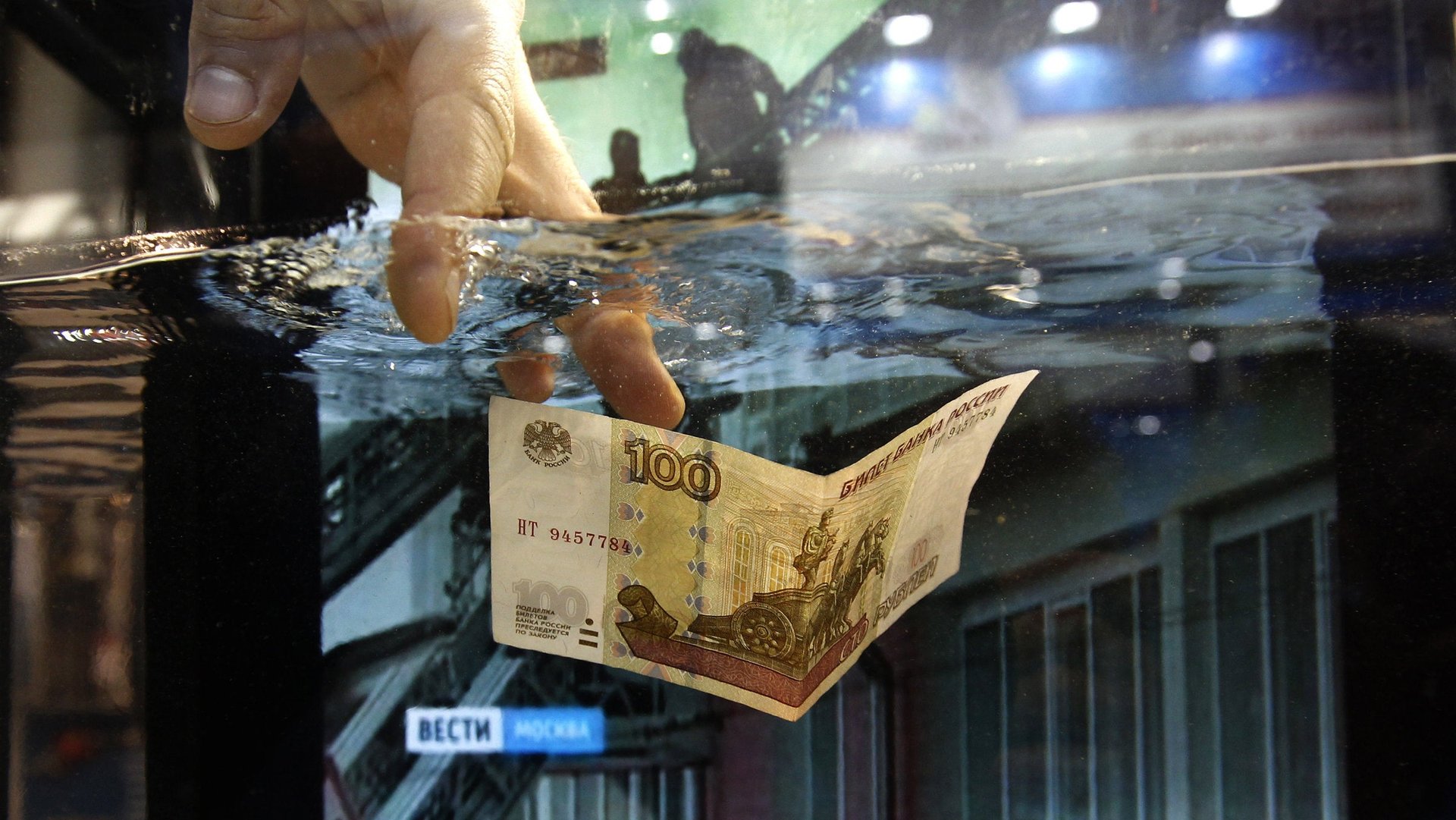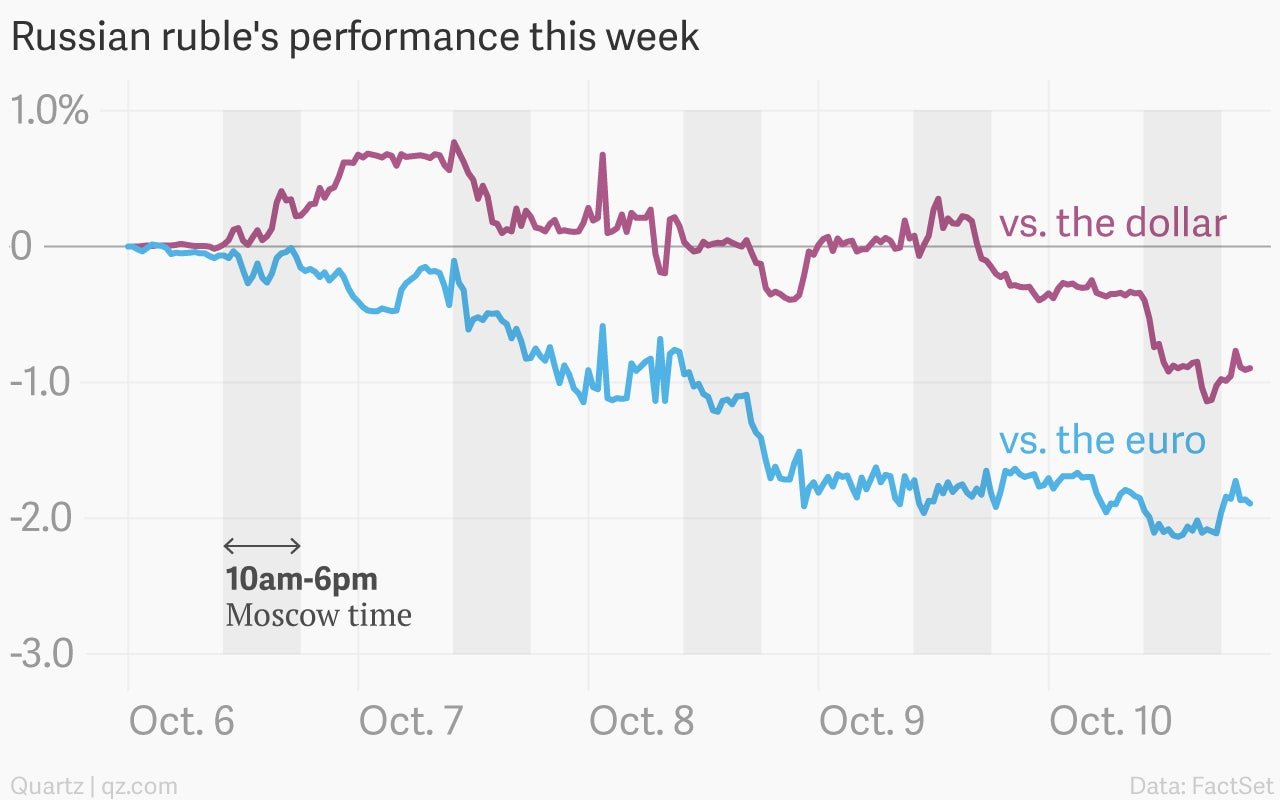Russia doesn’t have much to show for the billions it has spent bolstering the ruble
It’s after 6pm in Moscow, and the ruble is on its own. Russia’s central bank has spent several billion dollars propping up its currency over the past week, as the ruble comes under heavy selling pressure. When the currency hits the edge of a euro-dollar trading range, the central bank automatically dips into its reserves.


It’s after 6pm in Moscow, and the ruble is on its own. Russia’s central bank has spent several billion dollars propping up its currency over the past week, as the ruble comes under heavy selling pressure. When the currency hits the edge of a euro-dollar trading range, the central bank automatically dips into its reserves.
But as the Wall Street Journal points out (paywall), the central bank only intervenes in currency markets during Moscow office hours. Although this is when the bulk of ruble trading takes place anyway, global currency markets don’t shut as stock markets do.
Russia’s central bank confirmed to Quartz that it runs foreign-exchange interventions from 10am to 6pm Moscow time (7am to 3pm in London, 2am to 10am in New York). At any other time, the ruble is left to its own devices. This makes for some interesting market dynamics, with central bank interventions usually only briefly arresting the currency’s slide during the day:

This goes to show how little demand there is for the ruble. If not for the central bank’s support measures, there would have been even less respite for the ruble this week. And the Russian currency has lost more than 15% of its value against the central bank’s euro-dollar basket so far this year—making it one of the worst-performing currencies in the world—despite the bank spending some $45 billion of its reserves to support the exchange rate over that time.
Western sanctions and plunging oil prices are squeezing the Russian economy—and by extension, the ruble. The central bank can slow, but not stop, the slide.